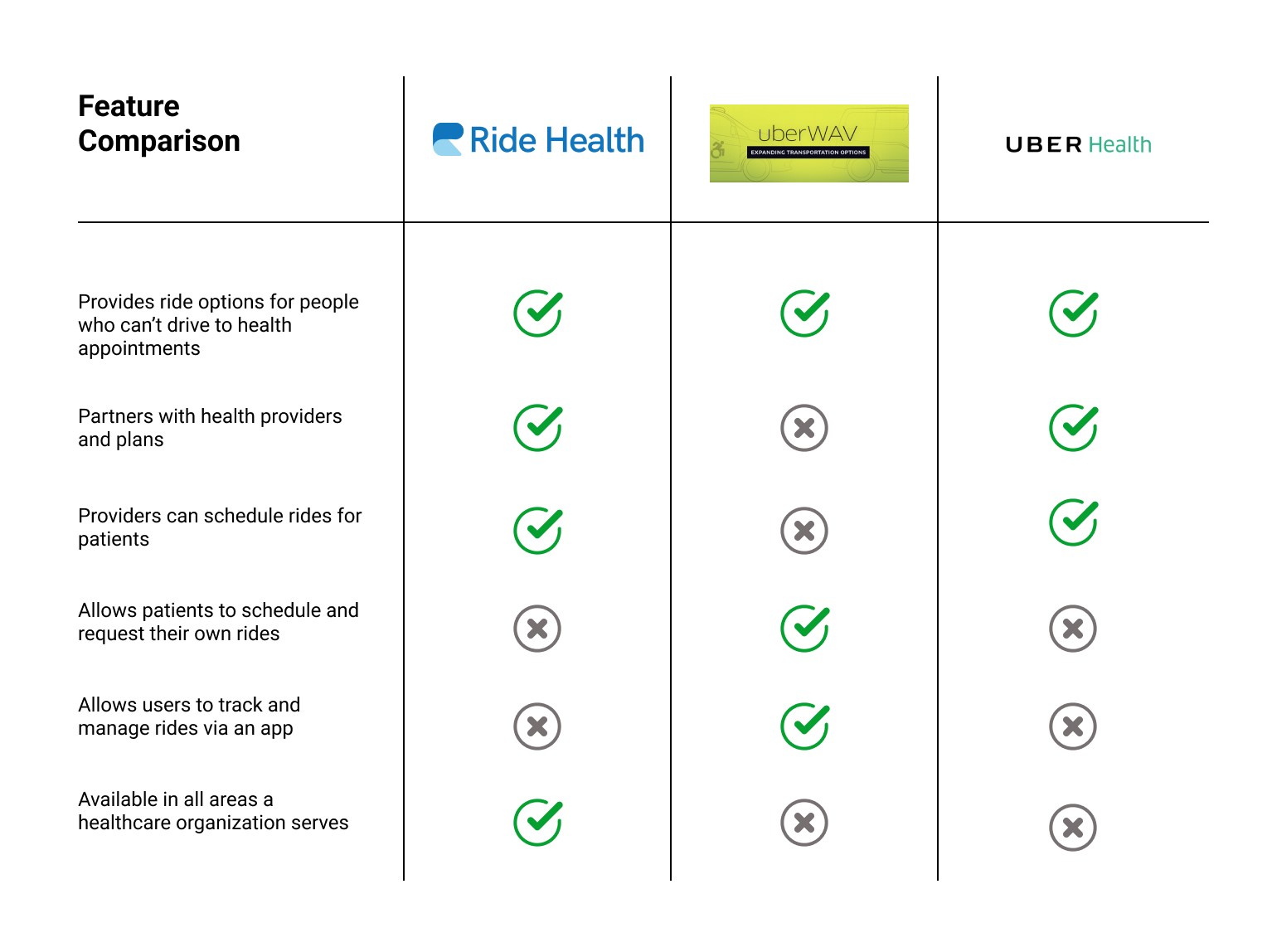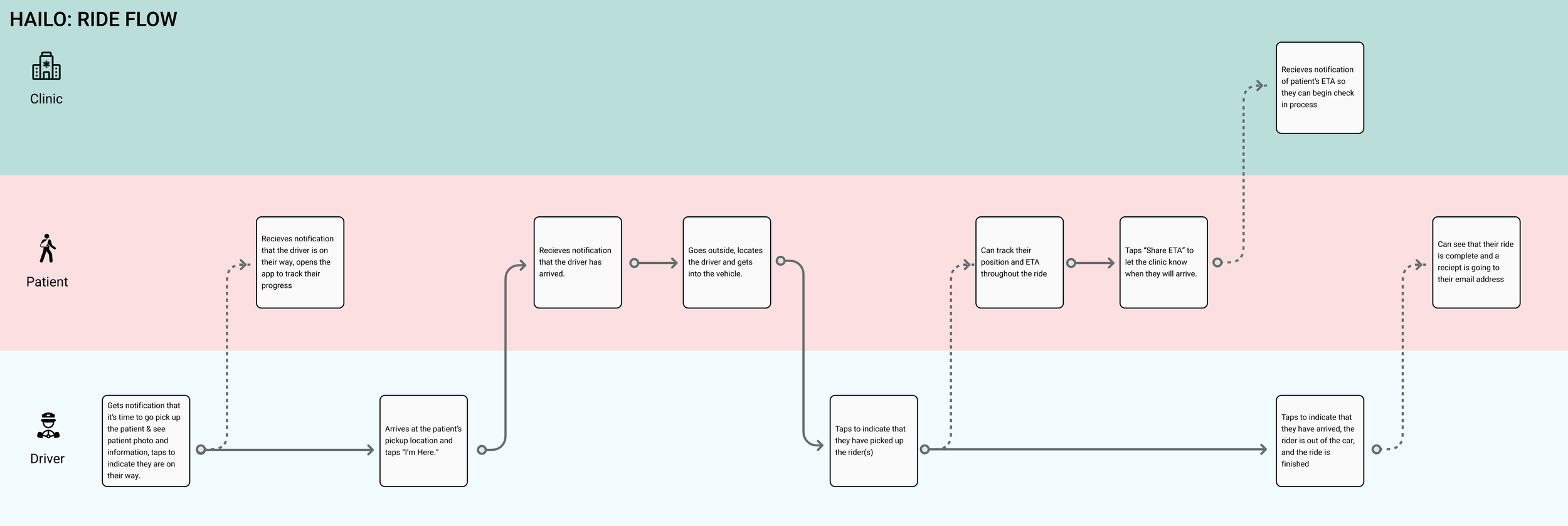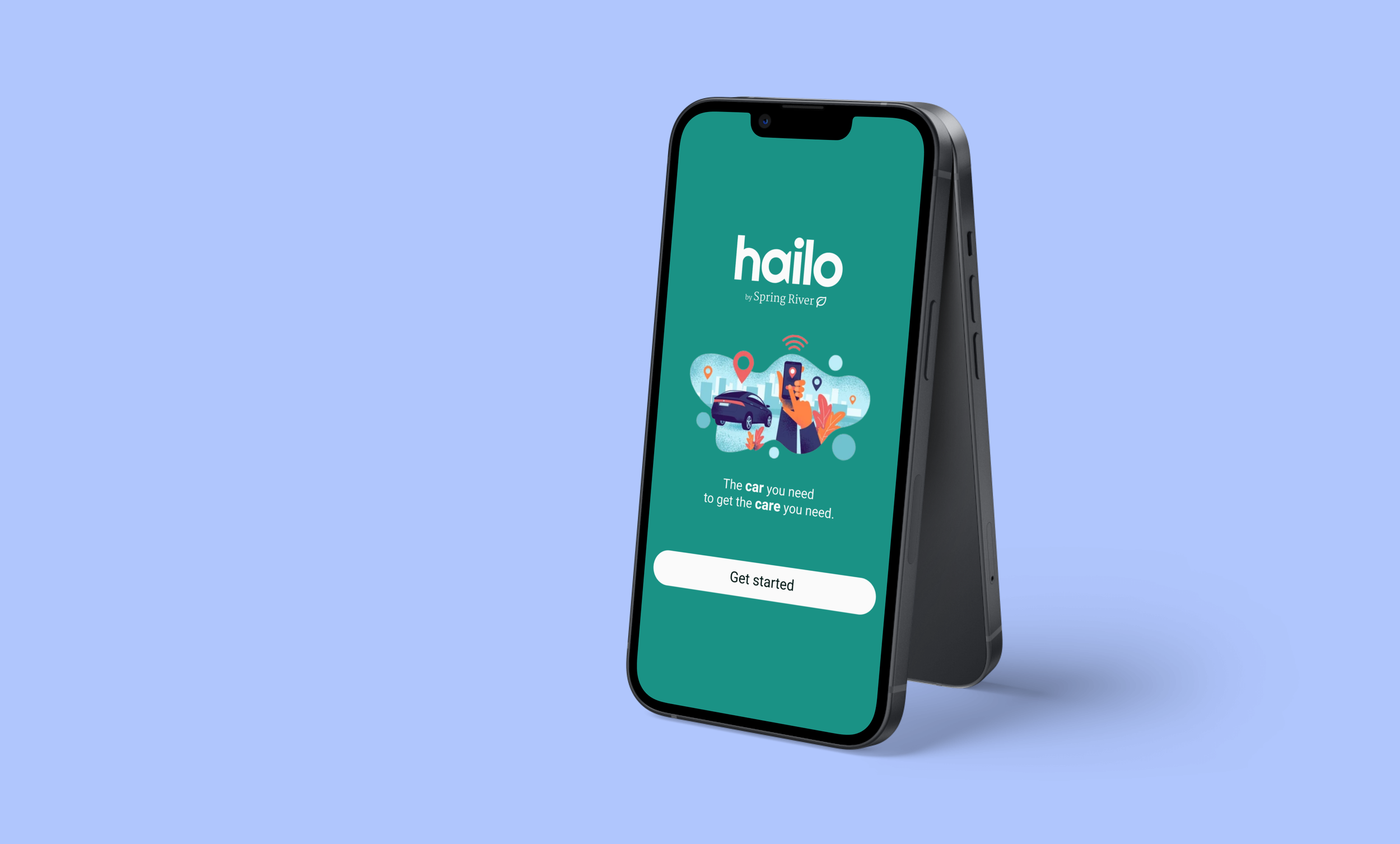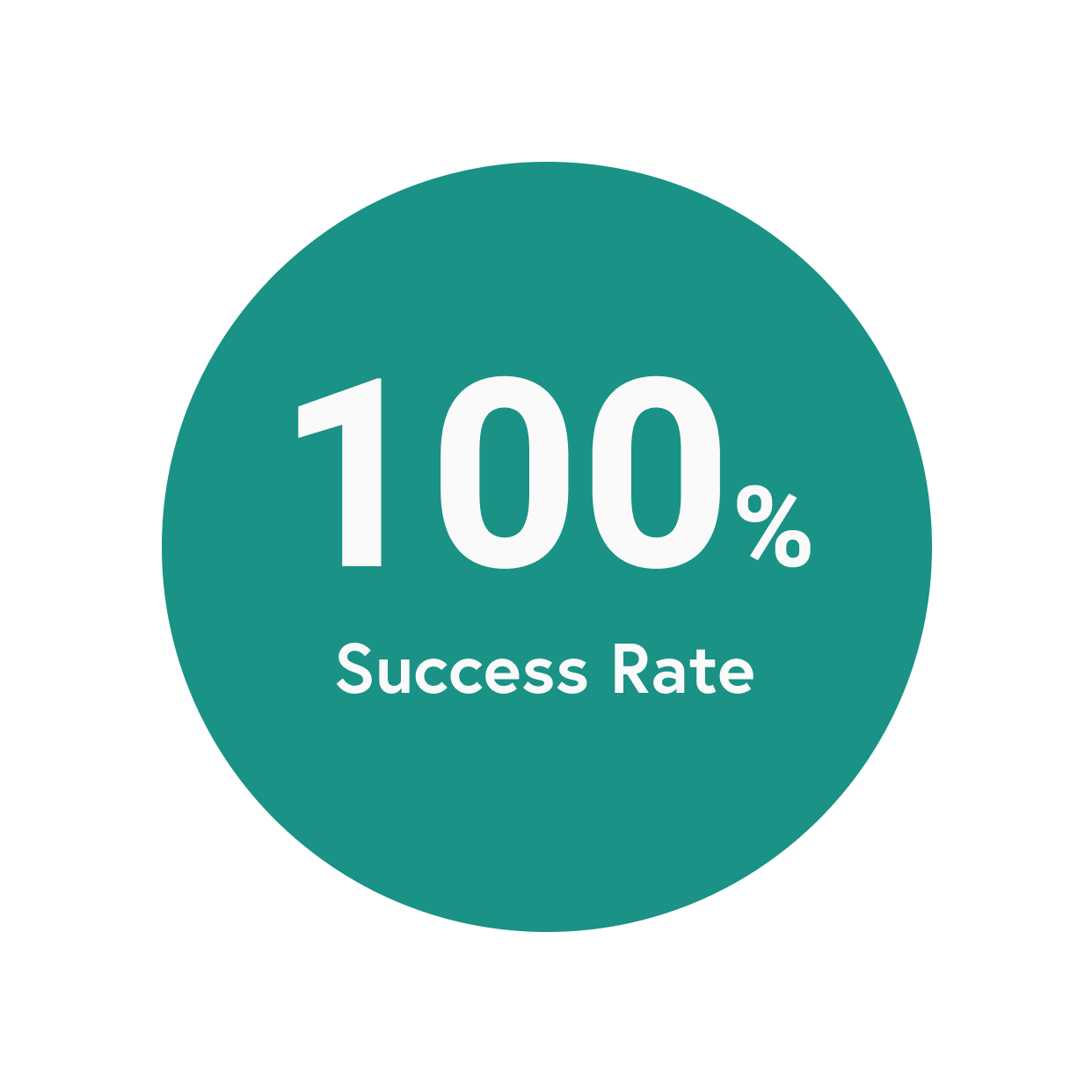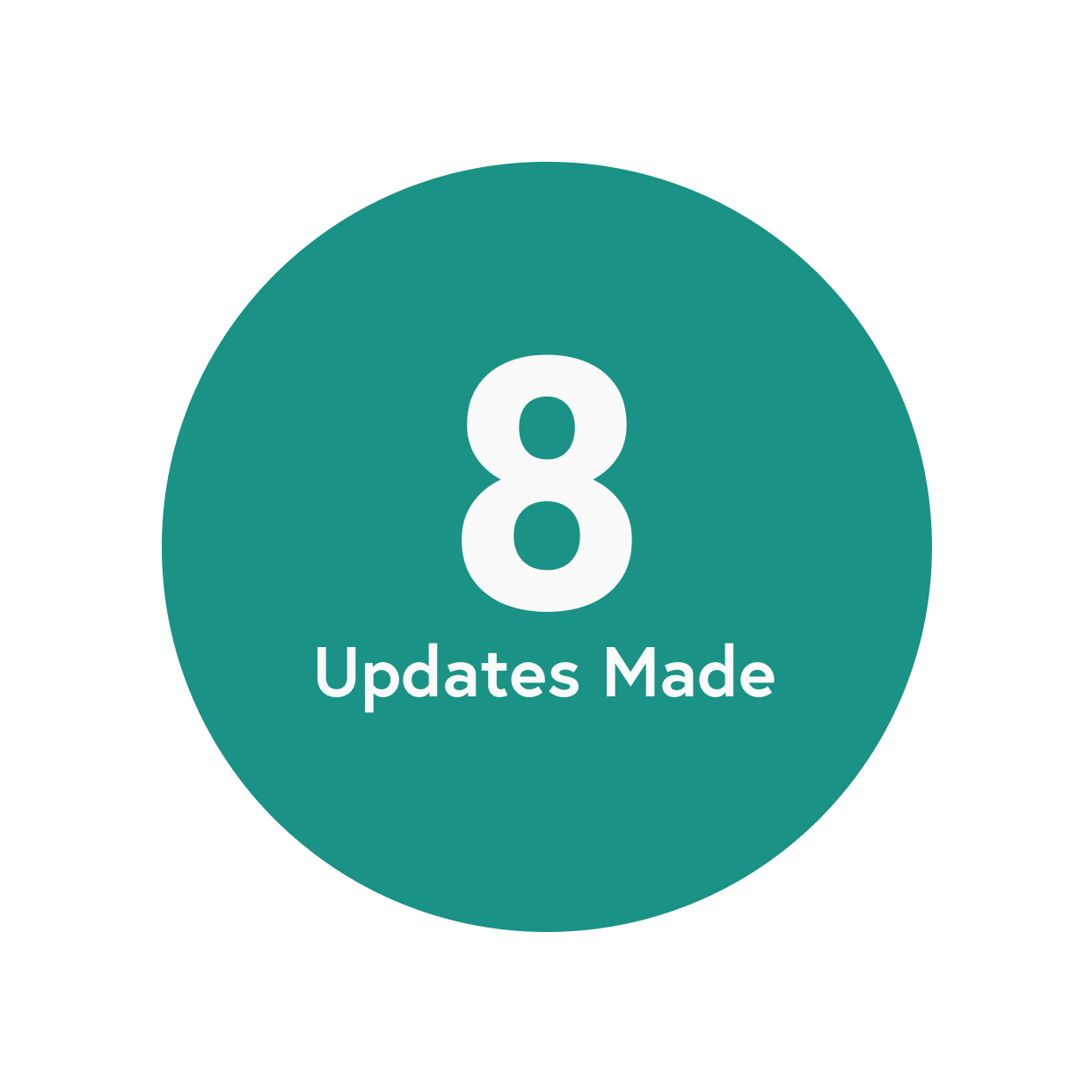
Hailo App: Non-Emergency Medical Transport
Reducing patient no-shows, one ride at a time.
My Role
UX/UI Designer
Strategies
Competitive Analysis, User Interviews, User Testing
Deliverables
Personas, Customer Journey Map, Task Flow, Branding, UI Library, Mockups, Prototypes
THE CHALLENGE
Up to 30% of scheduled medical appointments in the US can result in the patient failing to show up. Especially for seniors and for people in rural or poor urban areas, transportation is often the reason why they are unable to reach the clinic. Public transportation can be spotty or unreliable, cars are expensive to own and fuel, and taxis or even rideshares can be prohibitively expensive.
Spring River Health System, like many clinics that face high no-show rates, is implementing a transportation program to provide low-cost transport for patients to their appointments. Right now, these appointments can only be scheduled by phone or on their website, which doesn’t allow users to request and manage rides on their phones, or to track their drivers and rides in real time. Spring River Health wants me to create a mobile app to allow their patients to do these things, to help make their program a success.
THE IMPACT
The healthcare industry loses more than $150 billion a year to no-shows. On average, clinics and health systems experience a no-show rate of around 18.8 percent (source). So, let’s look at the math on lost revenue per year for just a single provider.
This means that in reducing no-shows, even by 15%, even a relatively small health system with say, 200 providers, could see a return of $4,690,224 a year. Spring River isn’t a real health system, but the problem in the healthcare industry is a real one and the potential gains with a solution are real, too.
RESEARCH
In my research, I wanted to know the frustrations people have with getting themselves and loved ones to medical appointments. My main research questions were:
How do people get to health appointments if they’re not able to drive?
What are the pain points about getting to health appointments?
What are the things people like the most about existing rideshare apps or taxis?
Competitor Analysis
I chose 3 competitors to check out existing solutions for non-emergency medical transport. I chose:
RideHealth, which partners with health plans and healthcare providers to order rides from various transportation options to get patients from home to their appointments and back
Uber WAV, an option within the existing Uber app to request a vehicle with a wheelchair ramp or lift
Uber Health, which also partners with healthcare providers to provide Uber rides for patients heading to and from appointments
My key takeaways were that these competitors offer an integration with healthcare organizations for easy scheduling, or autonomy for the patient via an app, but not both.
User Interviews
I interviewed four people that represented a good portion of the breadth of users that this app would be aimed at.
Margot, an 85 year old woman living in a retirement facility who doesn’t drive
Will, a middle-aged man who spent quite a bit of time facilitating transportation for his late mother
Marie, a young woman who is typically self-reliant for transportation
Dan, who uses a wheelchair and thus has to plan his travels more carefully than an abled person
I asked questions about how they currently arrange their transportation, if they’ve used ride share apps before and what they like and don’t like about them, and the frustrations they have with getting themselves and their loved ones to medical appointments.
“It’s very annoying when I’m treated like more like luggage than a person by people who are trying to ‘help’.”
“I appreciate my kids helping me but I don’t want to always burden them.”
DEFINE
To help myself define the features of a minimum viable product, I did some work with personas, customer journey mapping, and task flows.
Personas
Since there were a wide breadth of people who might use an app like this, I created two personas to keep in mind as I designed.
Customer Journey Map
I used this map format to understand my persona’s journey through using the app and the features it therefore needed to have, for requesting and tracking rides.
Task Flows
Hailo is an app with many different kinds of users. The clinic, the patient, and the drivers all interact with the app and take steps within driving the flow of the tasks. This task flow shows how the driver, rider, and even the clinic can get involved during the ride itself.

DESIGN
Then it was time to tackle the design phase. Branding, wireframes, mockups, and prototypes were all part of my process here.
Branding
Umbrella Brand
The simple logo inspires thoughts of life and growth, and the serif text offers authority and seriousness.
App Brand
You see I tried some logos that were more on-the-nose, but I landed on a simple but strong text logo.
Typography
Since the app was aimed at least partially at seniors, the typography needed to be easy to read. I landed on Heebo, which is similar in many ways to Google’s and Apple’s default fonts in its simplicity and high x height.
Color Palette
Green and blue shades are most often related to medical software and apps. For secondary colors, I chose one attention-grabbing contrast and one complimentary blue.
Wireframes
Fast and easy to iterate, I used wireframes to get an idea on a high level of what I wanted the framework of the app to look like, using references from other ride share apps and medical record/appointment apps. Here’s a snapshot of that work.
MOCKUPS & PROTOTYPES
For my mockups, I focused on 3 essential, MVP flows: scheduling a ride, tracking a ride, and requesting an on-demand return ride.
Schedule a Ride
Patients can use this flow to schedule a ride for their upcoming appointments. It pulls in appointments automatically, remembers saved locations and credit card details, and provides opportunities for the riders to request things like a wheelchair accessible vehicle or door-to-door assistance.
Tracking a Ride
In this flow, patients can track the status of their ride in real time. They can see details of the car and driver that will be picking them up, know exactly what time they will arrive and share their ETA with the clinic, and contact the driver if they need something. For this project, I focused on the patient/rider side of the app, but in this flow the driver’s version of the app would be driving forward much of the action. Check out the Task Flow section of this case study further up if you haven’t already.
On-Demand Return Ride
Patients likely wouldn’t always know when their appointment will be over or when they’d be ready to go home. Instead of asking them to plan a ride ahead and have them stress over getting done in time, some drivers would be dedicated to shuttling patients home, whenever they’re ready to go. The app is able to use location services to tell when a patient is at the clinic and the option to request an on-demand ride appears.
TESTING
My test results didn’t reveal any sweeping usability issues that required any overhauls, but I was able to get feedback on lots of little things I could do to make the experience more joyful. I took notes with sticky notes on images of the screens, so that I could see visually where the pain points clustered.
Task 1: Scheduling a Ride
Based on feedback from this user test, I made the following changes:
Revamp the toolbar to combine settings & profile and add permanent availability of contacting support
Make the CTAs on the Upcoming Visits screen more prominent
Change assistance on ride details screen to not be hidden behind an edit button
Add appointment details to upcoming ride summary
Task 2: Tracking a Ride
Based on feedback here, I made these changes:
Contact button relabeled so that it’s very clear what it will do, now says “Call Driver”
Maintain the pickup location in ride details even after the patient has left there
Make the ETA more prominent on the tracking page
Revamp how return rides work, moving to an on-demand model from previously scheduling a return ride time
SO WHAT’S NEXT?
Driver's App
What do the drivers see when they log into the app?
To find out, I’d start by talking to current ride-share app drivers and evaluate those competitor apps.
EMR Integration
What does it look like when the app integrates with the clinic’s electronic medical record system?
I’d talk to clinic schedulers and front desk users to find out what information is useful for them when it comes to patients’ arrivals.
Saving Time and the Planet
Some ride share apps have the option to opt into group rides at a lower cost and with potentially less flexibility. This could help reduce the costs of implementing a program like this.
I’d start by asking people questions about carpooling and public transportation habits.
LESSONS LEARNED
A UI Library is an initially time-consuming task that really saves time down the road.
I wish I would have started earlier with compiling my buttons, fields, drawers, and more into Figma components instead of going through and converting them later. What feels like something that ‘takes too much time’ when I want to get designing and power through some screens is a huge time saver when it comes later down the line to expanding rapidly and making changes to all screens at once.
Don’t be intimidated by competitors.
Even a huge conglomerate like Uber with most of the market share doesn’t have the perfect solution to everything. I knew I had something different I could bring to the table in this space, where patients are given the agency of controlling their own transportation. If this app were brought to market, Uber might have reason to stay on their toes, which ultimately is going to be good for the consumer.




